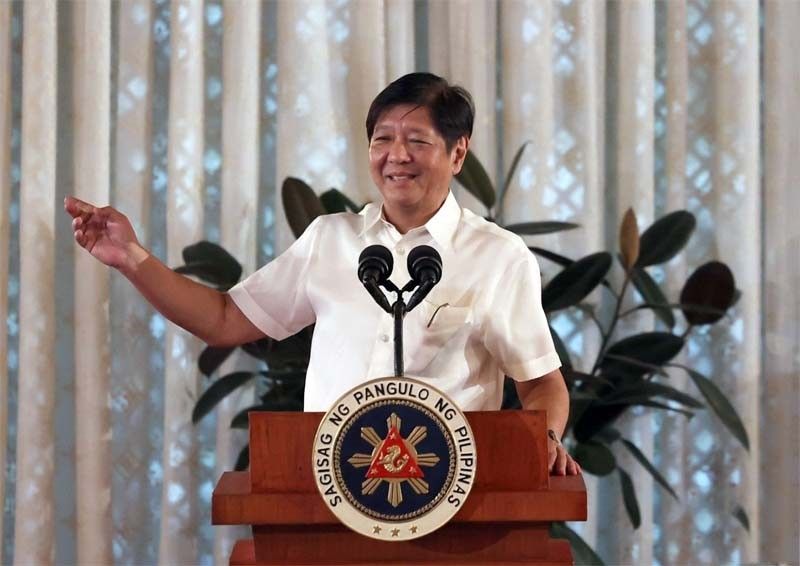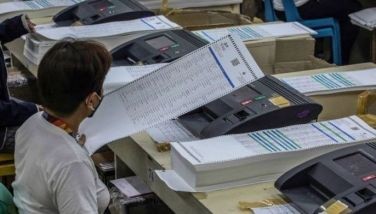Marcos to agencies: Address underspending, improve budget utilization

MANILA, Philippines — President Marcos has directed the different departments to address underspending and to ensure budgets for social programs reach the intended beneficiaries, officials said yesterday.
Fast-tracking the delivery of social services and improving the budget utilization of agencies dominated discussions at a sectoral meeting led by Marcos yesterday at Malacañang.
Labor Secretary Bienvenido Laguesma said Marcos had asked agencies to come up with catch-up plans in collaboration with local governments, lawmakers and the private sector.
“The President has given us strict instructions. The funds are there and they should be given to intended beneficiaries, especially those related to social programs,” Laguesma said at a Palace press briefing.
“Our catch up plans are ready,” he added.
He said there are initiatives that are not classified as social protection programs but are related to youth employability or those that seek to prepare young people for the post-pandemic reopening of the economy.
He admitted that the labor department was one of the agencies that posted a low budget utilization rate during the first quarter.
According to him, the department needed to conduct a thorough profiling of the intended beneficiaries of programs like the one intended for displaced workers to ensure that the funds are given to eligible recipients.
“We also need to ensure proper documentation, which is always being sought by the COA (Commission on Audit),” the labor chief said.
According to the latest cash operations report of the treasury bureau, the national government spent below the P2.582-trillion disbursement program for the first semester by P170.5 billion or 6.6 percent as of June 30.
The budget department recently issued Circular Letter No. 2023-10 requiring agencies to submit catch-up plans to facilitate budget execution for the rest of the year.
“Consistent with the objectives of the medium-term fiscal framework, the national government shall mobilize and utilize public resources in order to gain the maximum benefits and high multiplier effects for the economy,” Budget Secretary Amenah Pangandaman said in the letter.
“Given the sizable FY (fiscal year) 2023 national budget, government agencies shall execute their programs and projects as authorized in the annual budget and deliver planned results in a timely manner to help buttress robust economic growth,” she added.
Social Welfare Secretary Rex Gatchalian assured the Chief Executive that funds for government initiatives would go to intended recipients, despite efforts to speed up their use.
“While we want to fast-track the spending of the funds of the department, we want to avoid observations that the wrong people received them so we are conducting a thorough examination, especially when it comes to the 4Ps (Pantawid Pamilyang Pilipino Program) to make sure that the right families will receive the aid,” Gatchalian said in Filipino.
He expressed confidence that the Department of Social Welfare and Development (DSWD) would be able to catch up with its budget utilization for the rest of the year once the reassessment of the list of the 4Ps beneficiaries is completed by the end of September.
The DSWD received P151 billion this year for its social protection programs, with the 4Ps program getting the biggest chunk of its outlay.
One of the programs of the agency is the Assistance to Individuals in Crisis Situation (AICS) program, which assists individuals and families during crises and emergencies.
According to Gatchalian, the utilization rate for AICS was around 40 to 50 percent as of July 2023.
The bulk of the fund for semestral pension for senior citizens and the supplemental feeding programs in daycare centers is yet to be utilized, he added.
Debt service
The administration’s economic managers, meanwhile, have assured senators not to panic about the country’s ballooning debt servicing in the 2024 national budget as foreign borrowings are necessary to fund the administration’s ambitious infrastructure programs.
“There is nothing to fear in the 60 percent debt-to-GDP radio. That is reasonable and manageable. The way we borrow money is long-term, fixed interest rates, not floating interest rates,” Department of Finance Secretary Benjamin Diokno told senators at yesterday’s briefing by the Development Budget Coordination Committee on the proposed 2024 National Expenditure Program (NEP).
Before the pandemic, debt-to-GDP ratio stood at 39 percent.
The increase in debt-to-GDP radio was an effect of the pandemic lockdown, he added.
The government, in its medium-term fiscal plan, aims to further bring down the debt-to-GDP ratio to less than 60 percent by 2025 and to 51.1 percent by 2028 or the end of President Marcos’ term.
- Latest
- Trending
































